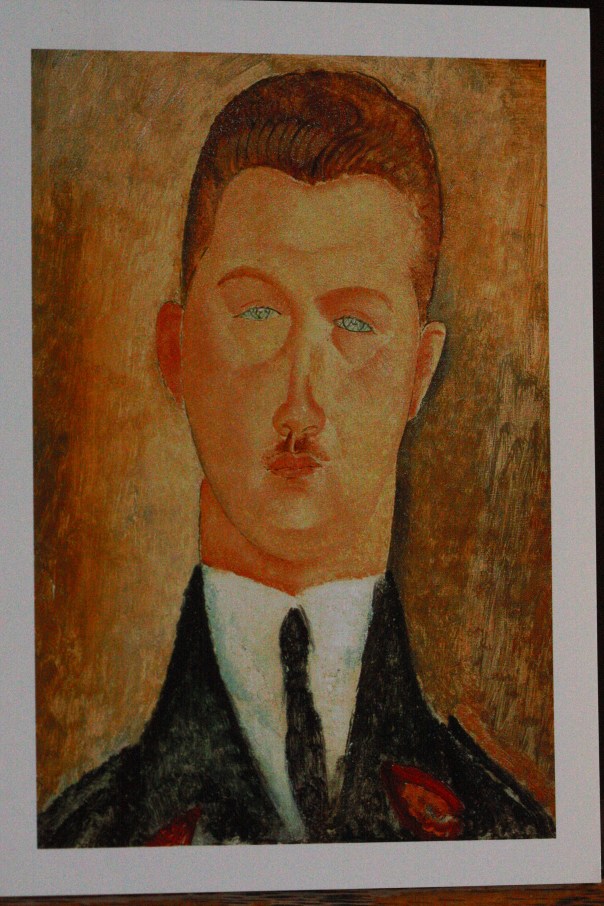
Browsing through the Estorick Collection in London I came across this portrait of Amadeo Modigliani by François Brabander and my first thought was ‘No! That’s not Modigliani!’ I saw Montparnasse 19 as a child on television and Modigliani is forever etched in my mind as the face of Gérard Phillippe. I have not seen Montparnasse 19 since then but I’ve never forgotten how beautiful Anouk Aimée is in that film nor Phillippe’s sadness at loving her but finding it all impossible because art was his life and his art wasn’t going well and he was so hungry; the film seemed full of shots of them walking around Montparnasse, loving but not wanting to love, both looking impossibly beautiful whilst sad and starving. I also remember Lilli Palmer at her most vivid and charming, tempting and taunting Phillippe with her body and her money.
This person in the Brabander photograph is suitably sad but that short moustache, the too long neck, the double chin! No! My reaction to the Brabander portrait is ridiculous even to myself. Phillipe was not only Modigliani to me, he was also the face of Stendhal’s heroes having played both Julien Sorel and Fabrice del Dongo in the movies; he was also the great Fanfan la Tulipe and, even though it is Marcello Mastroianni who played Arthur Merseault in the movies (for Visconti in The Stranger in 1967), it is Phillippe’s beautiful and sad face that is to me also the face of French post-war Existentialism. Thus whilst Modigliani to me has until now always been Gérard Phillippe, Gérard Phillippe has been Modigliani and more.
I nonetheless find it interesting that Phillippe was my first reference point, that the filmic representation of Modigliani took precedence over the historical portrait. In my mind, the Brabander portrait was being measured against, and found lacking in relation to, the image of Phillipe. Is this type of response typical? I suppose it doesn’t apply to historical figures who are already iconic to us before we encounter them at the movies – the Hitlers or Henry VII’s or Napoleons– but those who become famous to us through the movies — Paul Muni as Louis Pasteur, Anna Neagle as Edith Cavell, Cagney as George M. Cohan , perhaps this will even come true of Leonardo Di Caprio and Howard Hughes – it’s as if the figure of the actor becomes the root image against which all others — even historical paragraphs — get compared to, at least initially.

I’m sure this is often true and that people have been disappointed in the past to find that Madame Curie might not look very much like Greer Garson. Certainly I was disappointed to see that the real Modigliani only vaguely resembled the dreamy, trembly and poetic Gérard Phillippe even as my reason told me how silly it was to even think that it should. The movies offered dreams and fantasies, ideals and nightmares: reason there is really the least of it. And perhaps that’s why I’m afraid to re-visit Montparnasse 19 even though I now know the film was started by Ophuls and finished by Jacques Becker — information that would have meant nothing to me as a child — and even though I now see that Lino Ventura and Lila Kedrova are also in it: how could I forget that?
What could one hope to achieve by re-visiting Montparnasse 19 that is worth risking the beautiful and fragile memory embedded so powerfully so long ago? Yet seeing the Brabander portrait confirmed how Phillippe has always meant so much more to me than Modigliani, and indeed so has Ophuls and Jaques Becker and Lilli Palmer and even Lino Ventura. Ad perhaps a new encounter with them need not result in the ruin of an old one.
José Arroyo

1 thought on “Modigliani vs Gérard Phillippe in Montparnasse 19”